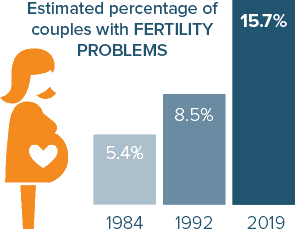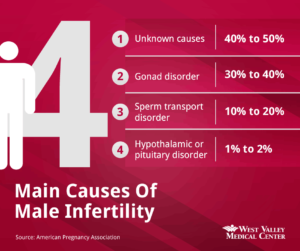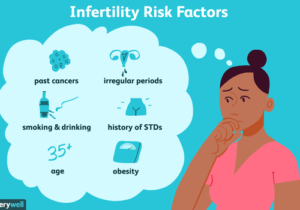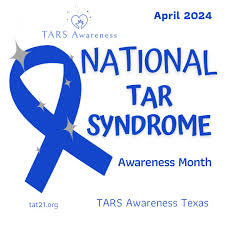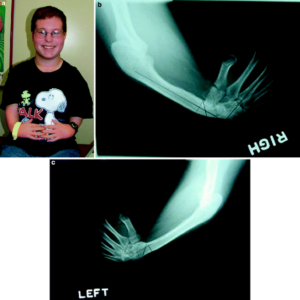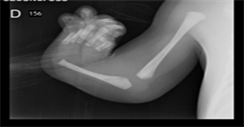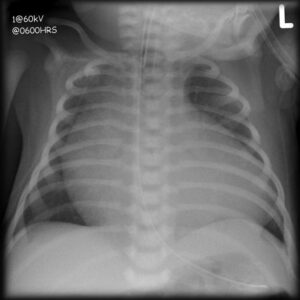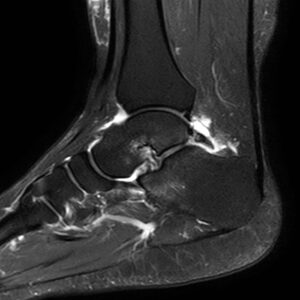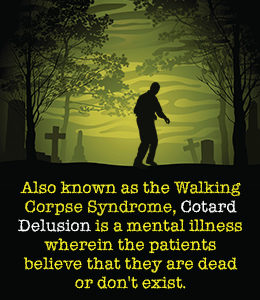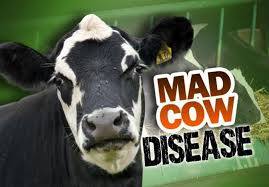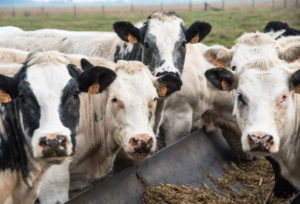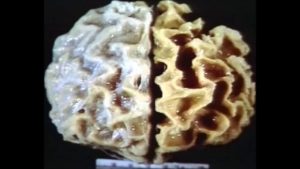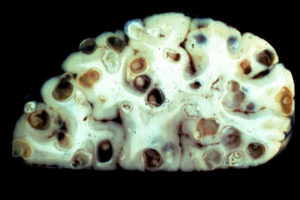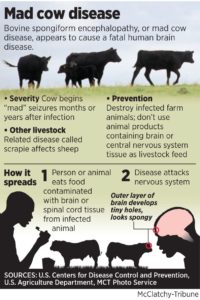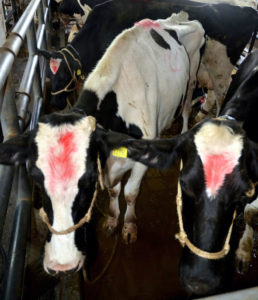Resolve – The National Fertility Association (https://resolve.org/)
Archives
Infertility Week Awareness 4/21-4/27
If you and your partner are struggling to have a baby, you’re not alone. In the United States, 10% to 15% of couples are infertile. Infertility is defined as not being able to get pregnant despite having frequent, unprotected sex for at least a year for most couples.
Infertility may result from an issue with either you or your partner, or a combination of factors that prevent pregnancy. Fortunately, there are many safe and effective therapies that significantly improve your chances of getting pregnant.
The main symptom of infertility is not getting pregnant. There may be no other obvious symptoms. Sometimes, women with infertility may have irregular or absent menstrual periods. In some cases, men with infertility may have some signs of hormonal problems, such as changes in hair growth or sexual function.
Most couples will eventually conceive, with or without treatment.
Risk Factors to being prone to this diagnose:
Age. Women’s fertility gradually declines with age, especially in the mid-30s, and it drops rapidly after age 37.
Tobacco use. Smoking tobacco or marijuana by either partner may reduce the likelihood of pregnancy.
Alcohol use. For women, there’s no safe level of alcohol use during conception or pregnancy. Alcohol use may contribute to infertility. With men it can decrease sperm count.
Being overweight. Among American women, an inactive lifestyle and being overweight may increase the risk of infertility. Sperm count for men can be affected by low sperm count.
Being underweight. Women at risk of fertility problems include those with eating disorders, such as anorexia or bulimia.
Exercise issues. A lack of exercise contributes to obesity, which increases the risk of infertility. Less often, ovulation problems may be associated with frequent strenuous, intense exercise in women who are not overweight.
When to take a trip to the doctor:
You probably don’t need to see your health care provider about infertility unless you have been trying regularly to get pregnant for at least one year. Women should talk with a care provider, the earlier the better, but if you haven’t yet go if you are:
- age 35 or older and have been trying to conceive for six months or longer
- over age 40
- having irregular or absent periods or very painful periods
- with known fertility problems
- diagnosed with endometriosis or pelvic inflammatory disease
- have had multiple miscarriages
- have undergone treatment for cancer
- have a history of endometriosis
- have a history of fallopian tube damage or blockage
- have a history of cancer and its treatment
- history of pelvic adhesions
Men should talk to a health care provider if they have:
- A low sperm count or other problems with sperm
- A history of testicular, prostate or sexual problems
- Undergone treatment for cancer
- Small testicles or swelling in the scrotum
- Others in your family with infertility problems
Know for many infertility can be treated with medicine, surgery, intrauterine insemination, or assisted reproductive technology. So go to the doctor if you are having problems and they can give you direction.
QUOTE FOR FRIDAY:
“Thrombocytopenia-absent radius (TAR) syndrome is a rare disorder that is present at birth (congenital). It is characterized by low levels of platelets in the blood (thrombocytopenia) and absence (aplasia) of the long, thin bones of the forearms (radii) but with presence of thumbs. Other abnormalities are often present including additional skeletal defects such as absence or underdevelopment of the other bone of the forearm (ulna), structural malformations of the heart (congenital heart defects) and kidney (renal) defects.”
NORD National Organization For Rare Diseases (https://rarediseases.org/rare-diseases/thrombocytopenia-absent-radius-syndrome/)
TAR Syndrome Month Awareness
Thrombocytopenia-absent radius (TAR) syndrome is a rare disorder that is present at birth (congenital). It is characterized by low levels of platelets in the blood (thrombocytopenia) and absence (aplasia) of the long, thin bones of the forearms (radii) but with presence of thumbs.
Other abnormalities are often present including additional skeletal defects such as absence or underdevelopment of the other bone of the forearm (ulna), structural malformations of the heart (congenital heart defects) and kidney (renal) defects. Affected individuals may be short for their age (short stature) and have cow’s milk intolerance.
Thrombocytopenia is congenital or develop within the first few weeks to months of life. Usually, platelet counts remain low during the first two years of life; then, they increase but do not normalize. Additional recurrent manifestations include: cardiac anomalies (atrial and/or ventricular septal defect, patent foramen ovale), gastro-intestinal involvement (cow’s milk allergy, increased susceptibility to gastro-enteritis), genitourinary anomalies (kidney agenesis or malrotation, horseshoe kidney, hydronephrosis, pyelectasis). Other rare manifestations include Mayer-Rokitansky-Kuster-Hauser syndrome, rib and vertebral anomalies, Langerhans cell histiocytosis, transient leukemoid reaction, acute myeloid or lymphoblastic leukemia. Cognitive development is usually normal.
The prevalence of thrombocytopenia-absent radius (TAR) syndrome is estimated at around 1/100,000-200,000 people.
Cause of TAR-Thrombocytopenia Absent Radius Syndrome:
TAR syndrome is inherited as an autosomal recessive genetic disorder and caused by deletion and/or variants in the RBM8A gene.
TAR syndrome is caused by compound heterozygosity for a null (most often a 1q21.1 deletion including RBM8A) and a hypomorphic RBM8A allele. It was demonstrated that Rbm8a is an essential neurogenesis regulator in embryonic cortical development. Most people with TAR syndrome have a mutation in one copy of the RBM8A gene and a deletion of genetic material from chromosome 1 that includes the other copy of the RBM8A gene in each cell.
Diagnosing TAR-Thrombocytopenia Absent Radius Syndrome:
It has been reported that TAR syndrome can be accompanied by craniofacial, cardiac, digestive, urogenital, and psychiatric abnormalities, as well as by lactose intolerance(4). The diagnosis of TAR syndrome is based on ultrasound findings and fetal blood sampling by cordocentesis to determine the number of platelets.
Suggestive Findings. Thrombocytopenia absent radius (TAR) syndrome should be suspected in individuals with: Bilateral absence of the radii with the presence of both thumbs. Thrombocytopenia, usually <50 platelets/nL (normal range: 150-400 platelets/nL)
Management and Treatment of TAR-Thrombocytopenia Absent Radius Syndrome:
There is no curative treatment for TAR syndrome. Symptomatic treatment of manifestations and prevention of complications include: early detection of thrombocytopenia, prevention of bleeding and hemorrhage, platelet transfusions in case of severe thrombocytopenia, surgical interventions if required to manage cardiac, urinary or skeletal malformations, avoidance of cow’s milk.
Prognosis of TAR-Thrombocytopenia Absent Radius Syndrome:
Prognosis is variable and mainly conditioned by the severity of thrombocytopenia and its complications (intracranial, digestive hemorrhage). Cardiac defects, renal malformations, acute complications of cow’s milk intolerance, acute leukemia can also affect the prognosis.
If a patient survives the initial 2 years of life, life expectancy is normal, MedLinePlus.com states.
Affected children who survive this period and do not have damaging hemorrhages in the brain usually have a normal life expectancy and normal intellectual development. The severity of skeletal problems in TAR syndrome varies among affected individuals.
QUOTE FOR THURSDAY:
“Cotard’s syndrome is a relatively rare condition that was first described by Dr. Jules Cotard in 1882. Cotard’s syndrome comprises any one of a series of delusions that range from a belief that one has lost organs, blood, or body parts to insisting that one has lost one’s soul or is dead.”
NIH National Library of Medicine (https://www.ncbi.nlm.nih.gov/pmc/articles/PMC2695744/)
Cotard’s syndrome
Cotard delusion, also known as or nihilistic delusion or walking corpse syndrome or Cotard’s syndrome , is a rare mental disorder in which the affected person holds the delusional belief that they are already dead, do not exist, are putrefying, or have lost their blood or internal organs.
Signs and Symptoms:
One of the main symptoms of Cotard delusion is nihilism. Nihilism is the belief that nothing has any value or meaning. It can also include the belief that nothing really exists. People with Cotard delusion feel as if they’re dead or rotting away. In some cases, they might feel like they’ve never existed.
While some people feel this way about their entire body, others only feel it in regard to specific organs, limbs, or even their soul.
Depression is also closely related to Cotard delusion. A 2011 review of existing research about Cotard delusion notes that 89% of documented cases include depression as a symptom.
Other symptoms include:
- anxiety
- hallucinations
- hypochondria
- guilt
- preoccupation with hurting yourself or death
Researchers aren’t sure what causes Cotard delusion, but there are a few possible risk factors. Several studies indicate that the average age of people with Cotard delusion is about 50. It can also occur in children and teenagers. People under the age of 25 with Cotard delusion tend to also have bipolar depression. Women also seem to be more likely to develop Cotard delusion.
In addition, Cotard delusion seems to occur more often in people who think their personal characteristics, rather than their environment, cause their behavior. People who believe that their environment causes their behavior are more likely to have a related condition called Capgras syndrome. This syndrome causes people to think their family and friends have been replaced by imposters. Cotard delusion and Capgras syndrome can also appear together.
Other mental health conditions that might increase someone’s risk of developing Cotard delusion include:
- bipolar disorder
- postpartum depression
- catatonia
- depersonalization disorder
- dissociative disorder
- psychotic depression
- schizophrenia
Cotard delusion also seems to be associated with certain neurological conditions, including:
- brain infections
- brain tumors
- dementia
- epilepsy
- migraines
- multiple sclerosis
- Parkinson’s disease
- stroke
- traumatic brain injuries
QUOTES FOR WEDNESDAY:
1-“Since 1996, evidence has been increasing for a causal relationship between the outbreak in Europe of a disease in cattle, called bovine spongiform encephalopathy (BSE, or “mad cow disease”), and a disease in humans, called “variant” Creutzfeldt-Jakob disease (vCJD).
Both disorders are invariably fatal brain diseases with unusually long incubation periods measured in years, and are caused by abnormally folded proteins in the brain called “prions” (pree-ons). ”
Cattle affected by BSE experience progressive degeneration of the nervous system. Signs usually don’t appear until about 3–6 years after initial infection.
The highest quality beef comes from animals that are under 36 months of age. Old cows produce highly acceptable beef if properly fattened and processed but know there is testing cows for it before making it food on our table.
Know this BSE belongs to a family of diseases known as transmissible spongiform encephalopathies that includes, among others, scrapie in sheep and goats; chronic wasting disease in deer, elk, and moose; and classic and variant Creutzfeldt-Jakob disease in people.”
1-Centers for Disease Control and Prevention-CDC (https://www.cdc.gov/prions/index.html)
*****
2-CHICAGO (Reuters) states – On May 19,2023 they stated “The U.S. Department of Agriculture (USDA) announced on Friday an atypical case of Bovine Spongiform Encephalopathy (BSE), commonly called mad cow disease, in an older beef cow at a slaughter plant in South Carolina.
*****
3-“We know that the earliest point at which current tests can accurately detect BSE is 2-to-3 months before the animal begins to show symptoms. The time between initial infection and the appearance of symptoms is about 5 years. Since most cattle that go to slaughter in the United States are both young and clinically normal, testing all slaughter cattle for BSE might offer misleading assurances of safety to the public.
The carcasses from the tested animals are held and not allowed to enter the human food chain until test results show the samples are negative for Bovine spongiform encephalopathy (BSE or Mad Cow Disease).”
3-U.S.D.A US Dept of Agriculture (https://www.usda.gov/topics/animals/bse-surveillance-information-center)
“Currently, there is no test to detect the disease in a live animal or in muscle meat products. BSE can only be confirmed by microscopic examination of brain tissue from the animal after its death using sophisticated laboratory techniques.”
3-U.S.D.A (https://ask.usda.gov/s/article/how-do-cattle-get-bovine-spongiform-encephalopathy)
Their is no standard testing before each cow including other wild life animals listed at the top that go on our plate sold in stores for food? Another thought, In the United States and the European Union, cows are typically slaughtered for beef between the ages of 18 months and 30 months. In the United States, most cows are slaughtered at around 24-30 months of age, although some may be slaughtered as young as 18 months; cows are about 5 yrs old when symptoms start showing. No regular testing on all cows used for meat for BSE no matter how low the incidence in US due to spreading can occur; really? Quite interesting but know based on statistics you have a 1 in a million chance getting this & it seems by history you have more of a chance in the mid to mid west area of US.
Part II MAD COW DISEASE=bovine spongiform encephalopathy. BSE in humans called Creutzfeldt-Jakob disease (vCJD).
Brain Results that were exposed to Mad Cow Disease making the brain a spongy like appearance. This is how it got the name BSE.
U.S. Drug and Food Administration states, “People can get a version of BSE called variant Creutzfeldt-Jakob disease (vCJD). As of December 4, 2017, 231 people worldwide are known to have become sick with vCJD according to the University of Edinburgh’s National CJD Research & Surveillance Unit. It is thought that they got the disease from eating food made from cows sick with BSE. Most of the people who have become sick with vCJD lived in the United Kingdom at some point in their lives. Only four lived in the U.S., and most likely, these four people became infected when they were living or traveling overseas.
Neither vCJD nor BSE is contagious. This means that it is not like catching a cold. A person (or a cow) cannot catch it from being near a sick person or cow. Also, research studies have shown that people cannot get BSE from drinking milk or eating dairy products, even if the milk came from a sick cow.”
Unfortunately, there are currently no treatments for prion diseases, brain-wasting diseases that are invariably fatal. The most common human prion disease is Creutzfeldt-Jakob disease (CJD), better known as mad cow disease. This disease is rare in humans.
Symptoms of Creutzfeldt-Jakob disease (CJD) can resemble those of other dementia-like brain disorders, such as Alzheimer’s. But Creutzfeldt-Jakob disease usually progresses much more rapidly.
CJD captured public attention in the 1990s when some people in the United Kingdom developed a form of the disease — variant CJD (vCJD) — after eating meat from diseased cattle. However, “classic” Creutzfeldt-Jakob disease hasn’t been linked to contaminated beef.
Although serious, CJD is rare, and vCJD is the least common form. Worldwide, there is an estimated one case of CJD diagnosed per million people each year, most often in older adults.
Creutzfeldt-Jakob disease (CJD) is marked by rapid mental deterioration, usually within a few months. Initial signs and symptoms typically include:
- Personality changes
- Anxiety
- Depression
- Memory loss
- Impaired thinking
- Blurred vision or blindness
- Insomnia
- Difficulty speaking
- Difficulty swallowing
- Sudden, jerky movements
As the disease progresses, mental symptoms worsen. Most people eventually lapse into a coma, first dementia to death. Heart failure, respiratory failure, pneumonia or other infections are generally the cause of death. Death usually occurs within a year.
In people with the rarer vCJD, psychiatric symptoms may be more prominent in the beginning, with dementia — the loss of the ability to think, reason and remember — developing later in the illness. In addition, this variant affects people at a younger age than classic CJD does and appears to have a slightly longer duration — 12 to 14 months.
Creutzfeldt-Jakob disease & its variants belong to a broad group of human & Sanimal diseases known as transmissible spongiform encephalopathies (TSEs). The name derives from the spongy holes, visible under a microscope, that affect the brain tissue.
How its transmitted? The risk of CJD is low. The disease can’t be transmitted through coughing or sneezing, touching, or sexual contact.
1-Heredity: 15 percent of people with CJD have a family history of the disease or test positive for a genetic mutation associated with CJD. This type is referred to as familial CJD.
2-Exposure to contaminated tissue. People who’ve received human growth hormone derived from human pituitary glands or who’ve had grafts of tissue that covers the brain (dura mater) may be at risk of iatrogenic CJD. .
3-The low risk of contracting vCJD from eating contaminated beef.
Regulating potential sources of vCJD
Most countries have taken steps to prevent BSE-infected tissue from entering the food supply, including:
- Tight restrictions on importation of cattle from countries where BSE is common
- Restrictions on animal feed
- Strict procedures for dealing with sick animals
- Surveillance and testing methods for tracking cattle health
- Restrictions on which parts of cattle can be processed for food
QUOTE FOR TUESDAY:
“The word BSE is short but it stands for a disease with a long name, bovine spongiform encephalopathy. “Bovine” means that the disease affects cows, “spongiform” refers to the way the brain from a sick cow looks spongy under a microscope, and “encephalopathy” meaning that it is a disease of the brain. BSE is commonly called “mad cow disease.
Cattle affected by BSE experience progressive degeneration of the nervous system. Signs usually don’t appear until about 3–6 years after initial infection.
Here’s what to look for:
- Changes in temperament (nervousness or aggression)
- Abnormal posture
- Coordination problems and difficulty in rising
- Weight loss
- Decreased milk production
- Loss of condition without noticeable loss of appetite
After signs appear, the animal’s condition deteriorates until it dies. This usually takes anywhere from 2 weeks to 6 months.”
U.S.D.A. US Dept or Agriculture (https://www.aphis.usda.gov/livestock-poultry-disease/cattle/bse)
Part I MAD COW DISEASE=bovine spongiform encephalopathy (BSE) & in humans called Creutzfeldt-Jakob disease (vCJD).
Mad Cow Disease (Spongiform Encephalopathy or BSE)
Mad cow disease, or bovine spongiform encephalopathy (BSE), is a disease that was first found in cattle. It’s related to a disease in humans called variant Creutzfeldt-Jakob disease (vCJD). Both disorders are universally fatal brain diseases caused by a prion. A prion is a protein particle that lacks DNA (nucleic acid). It’s believed to be the cause of various infectious diseases of the nervous system. Eating infected cattle products, including beef, can cause a human to develop mad cow disease.
What is mad cow disease?
Mad cow disease is a progressive, fatal neurological disorder of cattle resulting from infection by a prion. It appears to be caused by contaminated cattle feed that contains the prion agent. Most mad cow disease has happened in cattle in the United Kingdom (U.K.), a few cases were found in cattle in the U.S. between 2003 and 2006. There were 4 more reported up to 2018. Feed regulations were then tightened.
In addition to the cases of mad cow reported in the U.K. (78% of all cases were reported there) and the U.S., cases have also been reported in other countries, including France, Spain, Netherlands, Portugal, Ireland, Italy, Japan, Saudi Arabia, and Canada. Public health control measures have been implemented in many of the countries to prevent potentially infected tissues from entering the human food chain. These preventative measures appear to have been effective. For instance, Canada believes its prevention measures will wipe out the disease from its cattle population by 2017.
What is variant Creutzfeldt-Jakob Disease (vCJD)?
Creutzfeldt-Jakob Disease (CJD) is a rare, fatal brain disorder. It causes a rapid, progressive dementia (deterioration of mental functions), as well as associated neuromuscular disturbances. The disease, which in some ways resembles mad cow disease, traditionally has affected men and women between the ages of 50 and 75. The variant form, however, affects younger people (the average age of onset is 28) and has observed features that are not typical as compared with CJD. About 230 people with vCJD have been identified since 1996. Most are from the U.K. and other countries in Europe. It is rare in the U.S., with only 4 reported cases since 1996 until May of 2023 in Chicago found in baby cow.
What is the current risk of acquiring vCJD from eating beef and beef products produced from cattle in Europe?
Currently this risk appears to be very small, perhaps fewer than 1 case per 10 billion servings–if the risk exists at all. Travelers to Europe who are concerned about reducing any risk of exposure can avoid beef and beef products altogether, or can select beef or beef products, such as solid pieces of muscle meat, as opposed to ground beef and sausages. Solid pieces of beef are less likely to be contaminated with tissues that may hide the mad cow agent. Milk and milk products are not believed to transmit the mad cow agent. You can’t get vCJD or CJD by direct contact with a person who has the disease. Three cases acquired during transfusion of blood from an infected donor have been reported in the U.K. Most human Creutzfeldt-Jakob disease is not vCJD and is not related to beef consumption but is also likely due to prion proteins
The Risk of getting Mad Cow Disease in the US, based on CDC-Centers for Disease Prevention and Control show the following statistics:
On December 23, 2003, the U.S. Department of Agriculture (USDA) announced a presumptive diagnosis of the first known case of BSE in the United States. It was in an adult Holstein cow from Washington State. This diagnosis was confirmed by an international reference laboratory in Weybridge, England, on December 25. Trace-back based on an ear-tag identification number and subsequent genetic testing confirmed that the BSE-infected cow was imported into the United States from Canada in August 2001.
Because the animal was non-ambulatory (a “downer cow”) at slaughter, brain tissue samples were taken by USDA’s Animal and Plant Health Inspection Service as part of its targeted surveillance for BSE. However the animal’s condition was attributed to complications from calving. After the animal was examined by a USDA Food Safety and Inspection Service (FSIS) veterinary medical officer both before and after slaughter, the carcass was released for use as food for human consumption. During slaughter, the tissues considered to be at high risk for the transmission of the BSE agent were removed.
On December 24, 2003, FSIS recalled beef from cattle slaughtered in the same plant on the same day as the BSE positive cow.
On June 24, 2005, the USDA announced receipt of final results from The Veterinary Laboratories Agency in Weybridge, England, confirming BSE in a cow that had conflicting test results in 2004. This cow was from Texas, died at approximately 12 years of age, and represented the first endemic case of BSE by a cow in the United States.
On March 15, 2006, the USDA announced the confirmation of BSE in a cow in Alabama. The case was identified in a non-ambulatory (downer) cow on a farm in Alabama. The animal was euthanized by a local veterinarian and buried on the farm. The age of the cow was estimated by examination of the dentition as 10 years old.
It had no ear tags or distinctive marks; the herd of origin could not be identified despite an intense investigation.
In August 2008, several ARS investigators reported that a rare, genetic abnormality that may persist within the cattle population “is considered to have caused” BSE in this atypical (H-type) BSE animal from Alabama.
On April 24, 2012, the USDA confirmed a BSE case in a dairy cow in California. This cow was tested as part of the USDA targeted BSE surveillance at rendering facilities in the United States. The cow was 10 years and 7 months old and was classified as having the L-type BSE strain.
On July 18, 2017, the U.S. Department of Agriculture (USDA) announced the confirmation of the fifth case of bovine spongiform encephalopathy (BSE) in an 11-year-old cow in Alabama. The cow was found through USDA’s routine surveillance. The cow was found to be positive for an atypical (L-type) strain of BSE. Atypical BSE usually occurs in older cattle and seems to arise spontaneously in cattle populations.
On August 29, 2018 the U.S. Department of Agriculture (USDA) announced a confirmed atypical, H-type case of bovine spongiform encephalopathy (BSE) in a six year old mixed-breed beef cow in Florida. USDA reported that this animal never entered the food supply and at no time presented a risk to human health.
How does the cow even get Mad Cow Disease?
The parts of a cow that are not eaten by people are cooked, dried, and ground into a powder. The powder is then used for a variety of purposes, including as an ingredient in animal feed. A cow gets BSE by eating feed contaminated with parts that came from another cow that was sick with BSE. The contaminated feed contains the abnormal prion, and a cow becomes infected with the abnormal prion when it eats the feed. If a cow gets BSE, it most likely ate the contaminated feed during its first year of life. Remember, if a cow becomes infected with the abnormal prion when it is one-year-old, it usually will not show signs of BSE until it is five-years-old or possibly older.
Learn more tomorrow in Part II on Mad Cow Disease.
